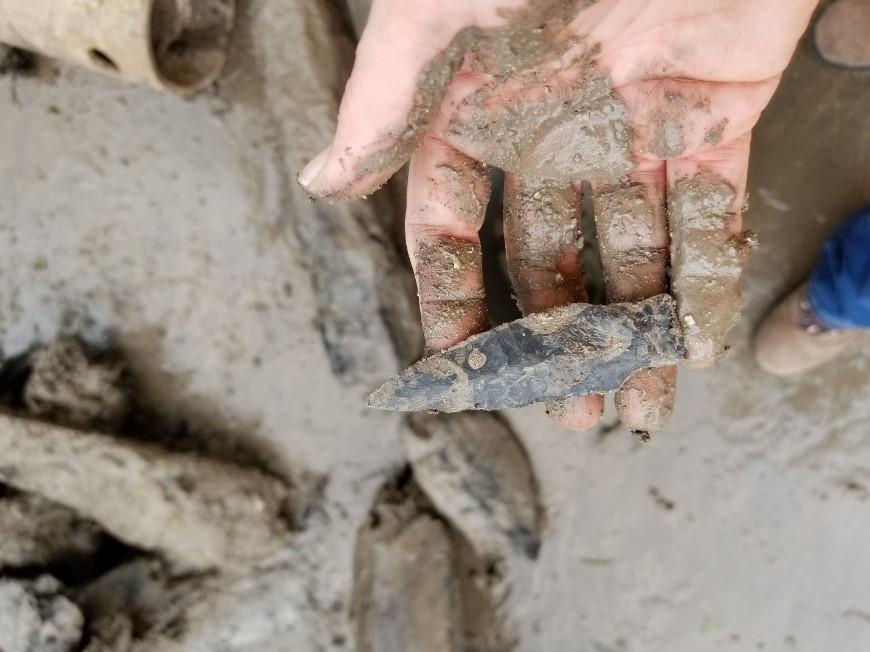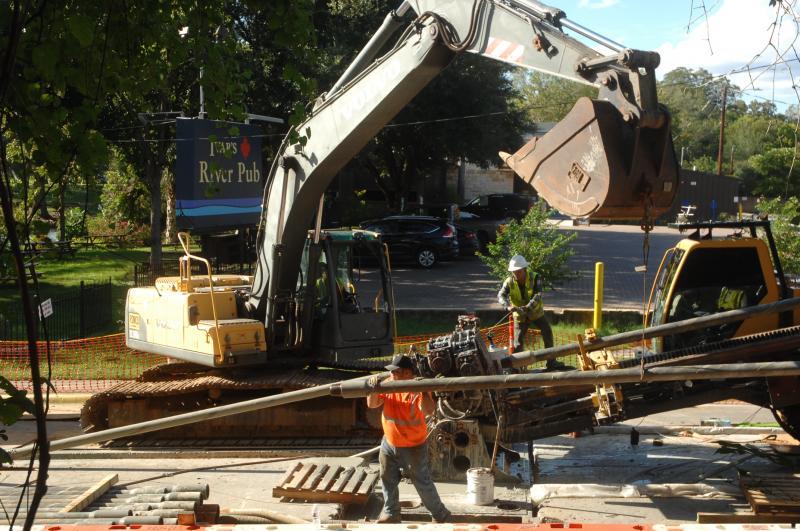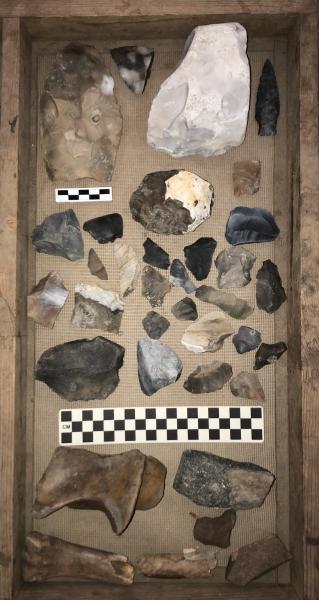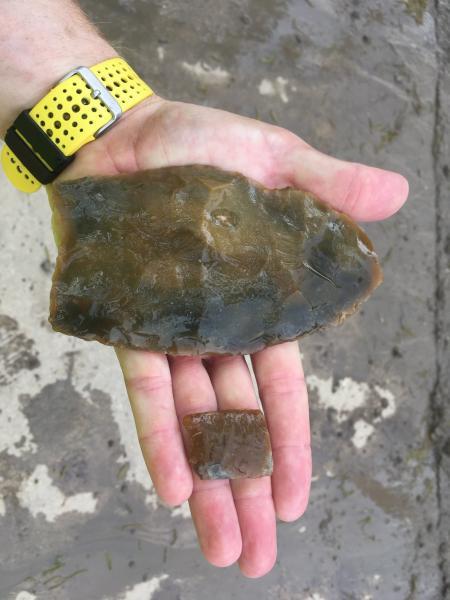
A Nolan projectile point dating to the Middle Archaic period, 5,800 to 4,000 years ago. Photo by CAS Archaeologist, Jacob Hooge
Inadvertent finds
The project was supposed to be routine — replacing a deteriorating water pipe between CM Allen Parkway and the San Marcos River to improve reliability and performance of the city’s system.
But in one of the longest continually-inhabited sites in North America, any work that cuts into the earth can quickly become anything but routine. In the case of the Cheatham Street Waterline Improvement Project, excavations uncovered artifacts as old as 10,000 years.

Traffic along Cheatham Street at Rio Vista Falls has been narrowed to one lane as work has resumed to replace an aging water line in an effort to improve system performance. Daily Record photo by Anita Miller
The project, which closed Cheatham Street at Rio Vista Falls, began before Memorial Day, but was suspended prior to the holiday because of the influx of people expected in the city’s parks during the long weekend and subsequent summer. It resumed after Labor Day and is expected, according to city spokesman Trey Hatt, to take about 60 days to complete.
Hatt, citing the project’s engineer Kirk Abbott, said work stopped because the contractor could not complete the necessary bore under Cheatham Street at the original location.

Sample of Prehistoric stone artifacts and Pleistocene animal bones recovered by CAS archaeologists during archaeological monitoring of the Cheatham Street Water Line project. Photo by CAS Archaeologist and Curator, Amy E. Reid
“Between the main river bed and the mill race, the bore head encountered a strata of ground which included voids, debris and inconsistent ground condition which inhibited the completion of the bore,” Hatt said. “Geotechnical investigations did not discover this ground condition during the design phase.”
He said when the work resumed last week, it was in a different area of Cheatham Street in order to “avoid the uncertain ground conditions.”
According to Amy Reid with the Center for Archaeological Studies (CAS) at Texas State University, the original bore site yielded a wealth of artifacts dating from 4,000 to 10,000 years ago. “Several animal bones, including a bison vertebra and a foot bone from a Pleistocene horse or tapir, were recovered from the site,” she said. “The excavation also uncovered a number of stone tools, including bifaces — prehistoric knives — and a hand ax, plus several projectile points and flake tools.”

Large bifacial knife (top) and fragment of a St. Mary’s Hall Paleoindian dart point (bottom) dating to approximately 10,000 years ago. Photo by CAS Archaeologist, Jacob Hooge
She said the points and tools represented several styles, and the bison vertebra showed scrape marks that “could be from a stone tool.” She added that additional analysis of the bones “is needed to determine if there is evidence for prehistoric human hunting of these Pleistocene animals at this location.”
As required by the Texas Antiquities Act, Reid sent a letter to the Texas Historical Commission informing them of the finds. According to the letter, the first “cultural material” was encountered on April 30 when a drill bit “became lodged approximately 17 feet beneath the paved surface” of Cheatham Street. Gravel discovered there is thought to be a “buried gravel bar suggesting the San Marcos River channel extended into this area at one time.”
The bison vertebra, the base of a Paleoindian dart point and five flake tools were discovered in the gravel bar.
Additional materials were discovered on May 1 including a Nolan Middle Archaic point and hand ax.
CAS is continuing to monitor the project as it progresses.











